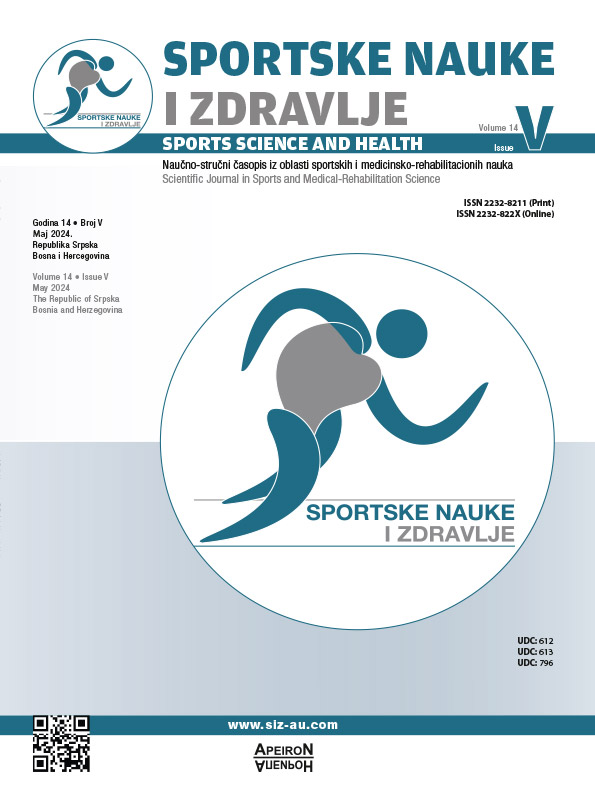Sprint characteristics and distance covered of female soccer players during the game
DOI:
https://doi.org/10.7251/SSH24V128AKeywords:
Sprint, distance covered, female, soccerAbstract
The purpose of writing this review is to increase our understanding of the physical demands of women’s soccer matches, especially the differences in sprint ratio and cruising power during matches with higher standards of play and between playing positions. The systematic review was conducted by the Preferred Reporting Items for Systematic Reviews and Meta-Analyses (PRISMA) Statement. An electronic systematic search of databases (Elsevier, PubMed, and Sage Journals) was completed on February 21, 2024, with no date restrictions applied. Electronic database searches identified 292 articles. A total of 16 articles remained for analysis after removal of duplicates, and initial and full-text screening. Then the number of articles was screened through several stages concerning the planned inclusion criteria and 8 articles met the inclusion criteria. The results of the current study show based on playing standards, the population is divided into semi-professionals, professionals, domestic and international players, national teams, and student or college classes. The locations of the studies varied from the European zone (Denmark, Spain, and UEFA Standards), America, Asia-Oceania zone (Korea and Australia), and Brazil. According to the age levels in the study, they range from U-17 players, U-20 players, College Students, to Seniors. Female professional soccer players cover long distances and perform high-intensity training like male players and that there are differences in movement patterns for each position. Therefore, to improve the performance of female soccer players and prevent injuries, it is necessary to develop training programs that take into account the characteristics of each player and playing position.
